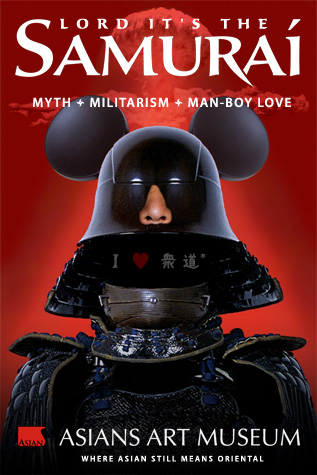Lord It's the Samurai: Myth + Militarism + Man-Boy Love
Tactical Intervention, 2009-2011.
Five years after the blockbuster Geisha: Beyond the Painted Smile exhibition, the Asian Art Museum turned to her male trope counterpart with the Darth Vader-esque "Lords of the Samurai" exhibit, complete with romantically exoticist marketing campaign. Their promotion reads:
"Enter the world of the samurai, and learn what it takes to balance the precision of the blade with the perfection of the brush stroke..." A textbook
example of what Edward Saïd described as a "Marvel of the East,"
"removed from history and idealized in a way that contradicts the facts of history," the museum's samurai embodied the highest virtue and beauty,
immaculately cleansed of centuries of violence and domination.
Given the popular masculinist and cultural nationalist investment in this warrior archetype, I knew I was up against a considerably greater
interventional challenge than I faced with the geisha, so I employed an elaborate "diversity of tactics" consisting of:
Shadow museum branding
Parodic Rack Cards
Museum website, detailed Samurai Webpage, and dialogic Blog
Performative lectures, interviews, and art actions
Viral media
Censorship/Authorship by the de Young Museum
The project took on a life of its own, generating discourse for the next two years, and was finally exhibited in 2012-13 at Intersection for the Arts in San Francisco.
An Art of Appropriation
In addition to the museum's marketing verbiage and visuals, I appropriated substantial academic research, not only as an act of intellectual activism,
but also as a strategy for appropriating the legitimacy of the academe, to raise the stakes of the critique and recruit scholarly and museal participation. It operated on multiple levels across numerous disciplines. The essence of the critique:
"Enter the world of the samurai, where seven centuries of martial rule are reduced to a single Disney-like trope of gentleman-warrior myth. Military prowess meets cultural connoisseurship in an ideal of masculine perfection—selling militarism as beauty in a time of war."
All aspects of this critique were explicated on the Lord Its the Samurai exhibition webpage, rife with supporting links to sources of record.
Parodic Branding and Promotion
Lord It's the Samurai gave birth to a shadow brand, complete with logo, tag line, and website.

Rack Cards: 9 x 4 in., double-sided. Over 5,000 distributed at museum actions, galleries, colleges, other museums, bookstores, cafes, yoga studios in SF and the East Bay.
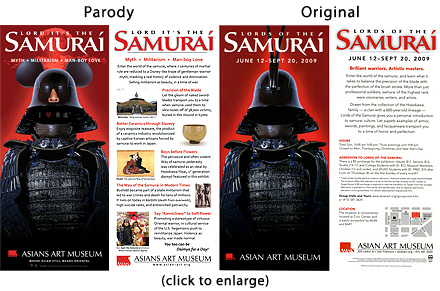
Museum Website: www.asiansart.org vs. asianart.org. Online presence enabled international viral distribution. While the sites look nearly identical, the code
was built from scratch. Theirs has since been revised, but you can see the original below. Visit ours here.
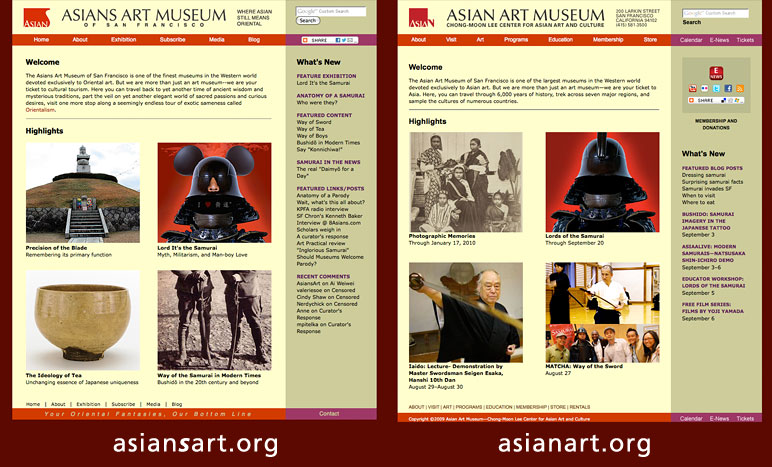
Samurai Exhibition Webpage: Herein lies the heart of the critique, packed with nearly a hundred links to the most recent scholarship and journalism I could find,
in an act of what the Independent Scholar's Handbook refers to as "intellectual activism": activities which make existing knowledge more accessible, understandable, and useful to others.
Exposes the disavowed history, essentialist mythology, and soft power geopolitics behind the "samurai fever" taking place at a number of art museums in 2009, as the U.S. pressured Japan to re-militarize under new leadership. Visit Lord It's the Samurai.
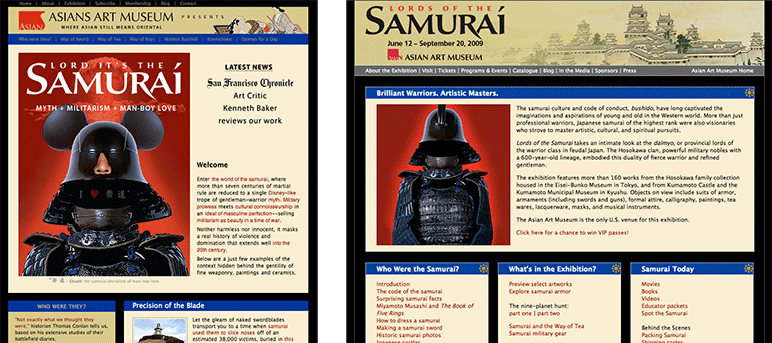
Asians Art Museum's Samurai Blog: a space for substantive dialogue,
news as-it-happens [e.g. 1, 2],
project timeline, and vehicle for extending the critique.
Spirited commentary from undergraduate and graduate students, martial arts sword instructors in Japan, museum educator, curator, scholars, community arts folks, and others, in English and Japanese. Visit the blog.

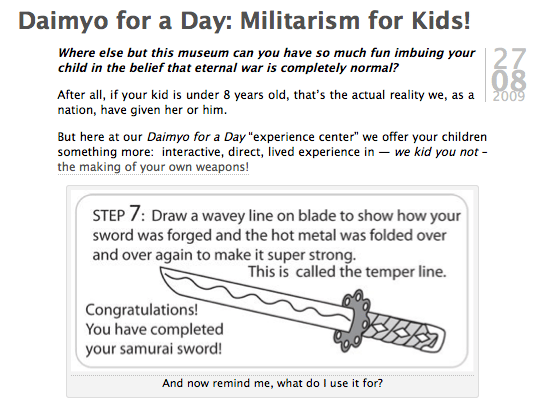
The blog has remained active with ongoing museum-based activity (e.g. Tortilla Subversion) and critique (e.g. Proximities 1), as well as general postings on art, politics, race, public higher education, and Bay Area Occupy coverage.
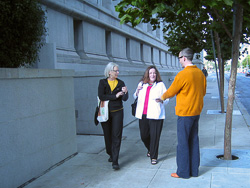
Performative Acts
I performed the role of Majime Sugiru, Communications Director of the Asians Art Museum. In Japanese this pseudonym translates as "way too serious."
Radio Interview: Majime Sugiru with Prof. Valerie Soe of San Francisco State University, interviewed by host Weylon Southon on KPFA's Hard Knock Radio.
In-depth Online Interview: instrumental in providing additional nuance and substance during the early viral spread of the project, at 8Asians.com.
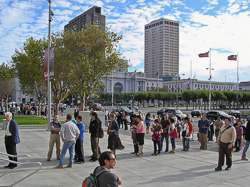 Educational Outreach: gave performative classroom and public lectures at local colleges and universities.
Educational Outreach: gave performative classroom and public lectures at local colleges and universities.
Art Actions: organized guerrilla crew to distribute rack cards and engage in dialogue with visitors attending museum events. At a Thursday evening Matcha event featuring a sword instructor from the Japanese military, the line wrapped around the block, providing a captive audience to whom to distribute hundreds of flyers. For an early morning K-12 Teacher Training, our
congenial representatives were out bright and early to direct visitors to the appropriate entrance and make sure they had the "correct" teaching materials.
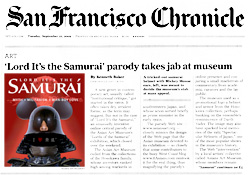
Viral Media
Working through a network of Asian American community members, college educators (in cultural studies, Asian studies, Ethnic studies, and art history) and the local arts community, the project went viral via social media shortly after its launch.
Within a week, it drew approval from Asian Studies scholars, which brought further validation from a LACMA curator who suggested the issues raised be discussed at the annual meeting of Asian Art curators at the Smithsonian,
as well as commentary from an educator at a major national museum,
and an Asian Art Museum volunteer.
The site drew traffic from universities and museums around the globe, as discussions took place in classrooms from Auckland to Hawaii to the Midwest (Kansas, Michigan) and New England and beyond.
It first began to be published on art, culture and news blogs locally and extended overseas, appearing in print shortly after the museum's exhibition closed, in a favorable article by Kenneth Baker in the SF Chronicle, followed by the Art Newspaper in London.
 The project took on a life of its own for the next couple of years, eventually appearing in peer reviewed academic literature in 2011.
The project took on a life of its own for the next couple of years, eventually appearing in peer reviewed academic literature in 2011.
Links to collected articles here.
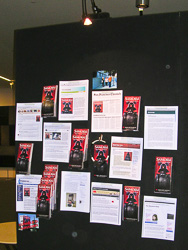
Museum Censorship / Museum Authorship
Shortly after the museum exhibition closed, Majime Sugiru submitted a proposal inspired by the project to a juried community art exhibition at the de Young Museum, another city-owned museum that formerly housed the Asian Art Museum. The jury selected the project, and Sugiru spent the ensuing six weeks developing it, in accordance with
the de Young's detailed guidelines.
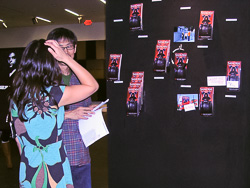 An hour before the exhibit was about to open, museum administrators ordered the removal of most of the samurai installation, without examining it first-hand. They banned the display of the print-outs of all of the public discourse generated by the intervention to date, over 100 pages of material.
An hour before the exhibit was about to open, museum administrators ordered the removal of most of the samurai installation, without examining it first-hand. They banned the display of the print-outs of all of the public discourse generated by the intervention to date, over 100 pages of material.
The rationale would have brought a smile to Richard Mutt's face: "This is not art!" declared the museum's project coordinator.
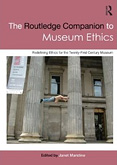 The show itself was only a one-night event, and had it passed without incident, Sugiru's installation might well have gone largely unnoticed. By censoring the project, however, the de Young Museum unwittingly became an author of the ‘not-art’, extending its life in unexpected ways.
The show itself was only a one-night event, and had it passed without incident, Sugiru's installation might well have gone largely unnoticed. By censoring the project, however, the de Young Museum unwittingly became an author of the ‘not-art’, extending its life in unexpected ways.
Two years later, the project was detailed in a chapter titled "Museum Censorship" in the Routledge Companion to Museum Ethics: Redefining Ethics for the 21st Century Museum, and in a seven-page interview
on art and activism in a Japanese journal by professor Megumi Kitahara of Osaka Graduate University.
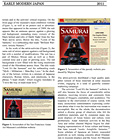 In the article "Should Museums Welcome Parody?" published in the interdisciplinary journal Early Modern Japan (2011), scholar Morgan Pitelka concludes:
In the article "Should Museums Welcome Parody?" published in the interdisciplinary journal Early Modern Japan (2011), scholar Morgan Pitelka concludes:
"Because in the end, the complicated and at times heated conversation about history, identity, and representation that can be traced through the
websites, interventions, blogs, and even radio shows related to the Lords of the Samurai exhibition adds up to one of the more
significant and compelling English-language critiques—albeit in the form of online hypertext—of the politics of museum displays of Japanese culture."
